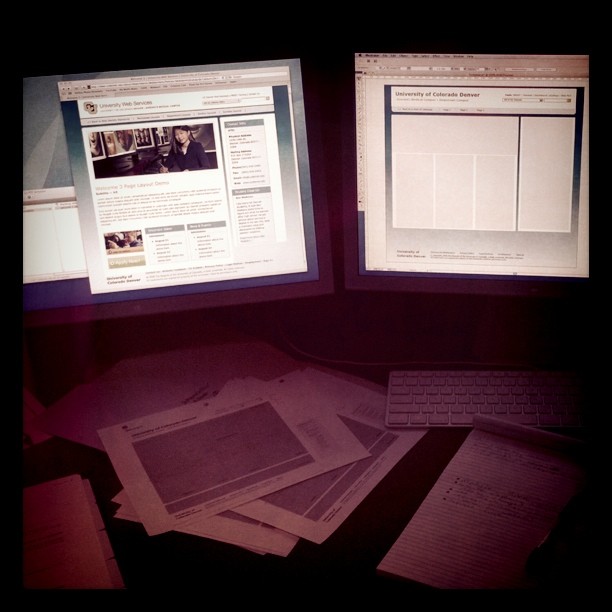
Remediation thoughts
The Language of New Media analyzes the language of contemporary new media (or, to put this differently, “early new media”) as the mix (we can also use software metaphors of “morph” or “composite”) between two different sets of cultural forces, or cultural conventions: on the one hand, the conventions of already mature cultural forms (such as a page, a rectangular frame, a mobile point of view) and, on the other hand, the conventions of computer software and, in particular, of HCI, as they developed until now.
Let me illustrate this idea with two examples. In modern visual culture a representational image was something one gazed at, rather than interacted with. An image was also one continuous representational field, i.e. a single scene. In the 1980s GUI redefined an image as a figure-ground opposition between a non-interactive, passive ground (typically a desktop pattern) and active icons and hyperlinks (such as the icons of documents and applications appearing on the desktop). The treatment of representational images in new media represents a mix between these two very different conventions. An image retains its representational function while at the same time is treated as a set of hot spots (“image-map”). This is the standard convention in interactive multimedia, computer games and Web pages. So while visually an image still appears as a single continuous field, in fact it is broken into a number of regions with hyperlinks connected to these regions, so clicking on a region opens a new page, or re-starts game narrative, etc.
This example illustrates how a HCI convention is “superimposed” (in this case, both metaphorically and literally, as a designer places hot spots over an existing image) over an older representational convention. Another way to think about this is to say that a technique normally used for control and data management is mixed with a technique of fictional representation and fictional narration.
-Lev Manovich
